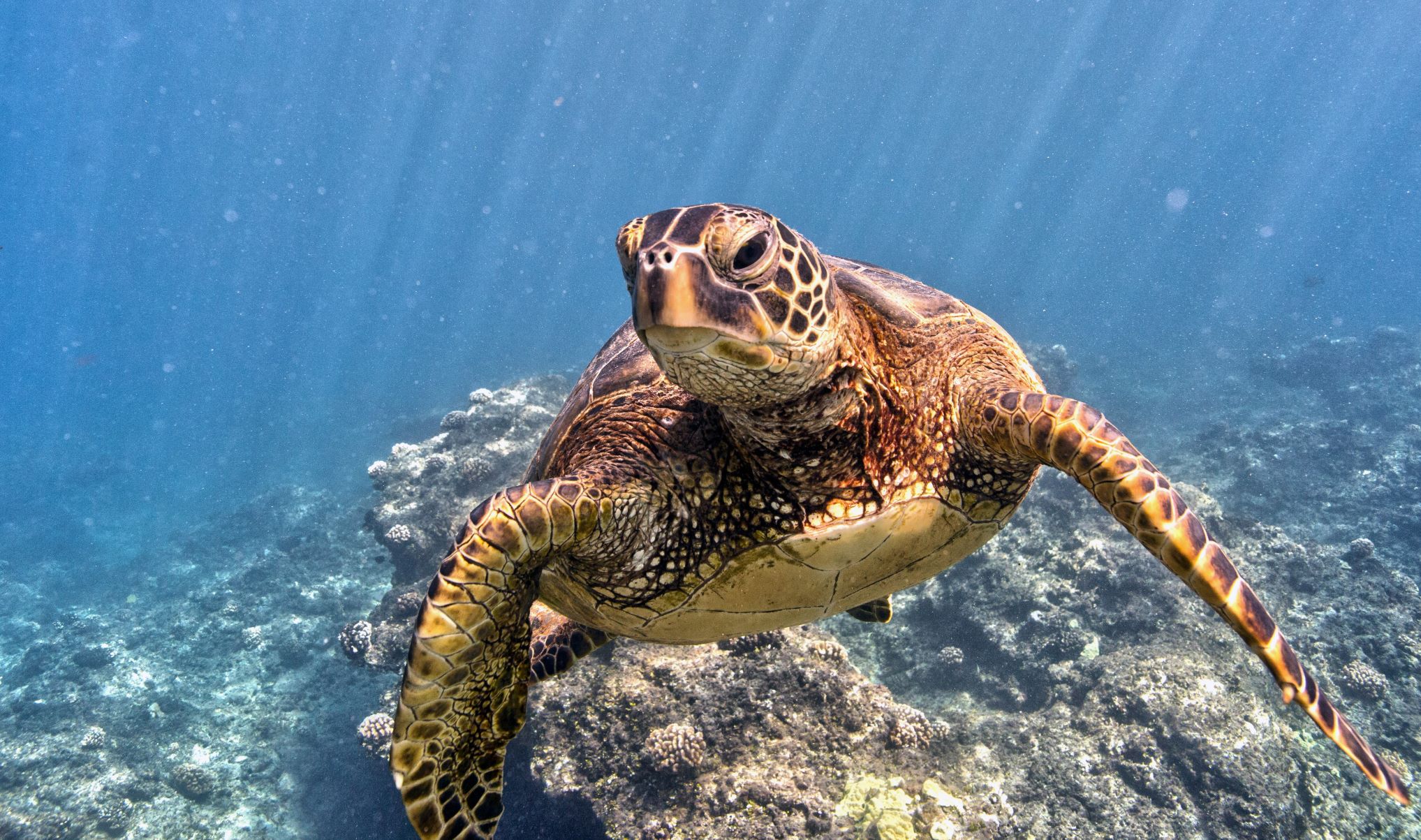
Cabo Pulmo: The jewel of the Gulf of California
This marine protected area helped marine life recover from near-total destruction.
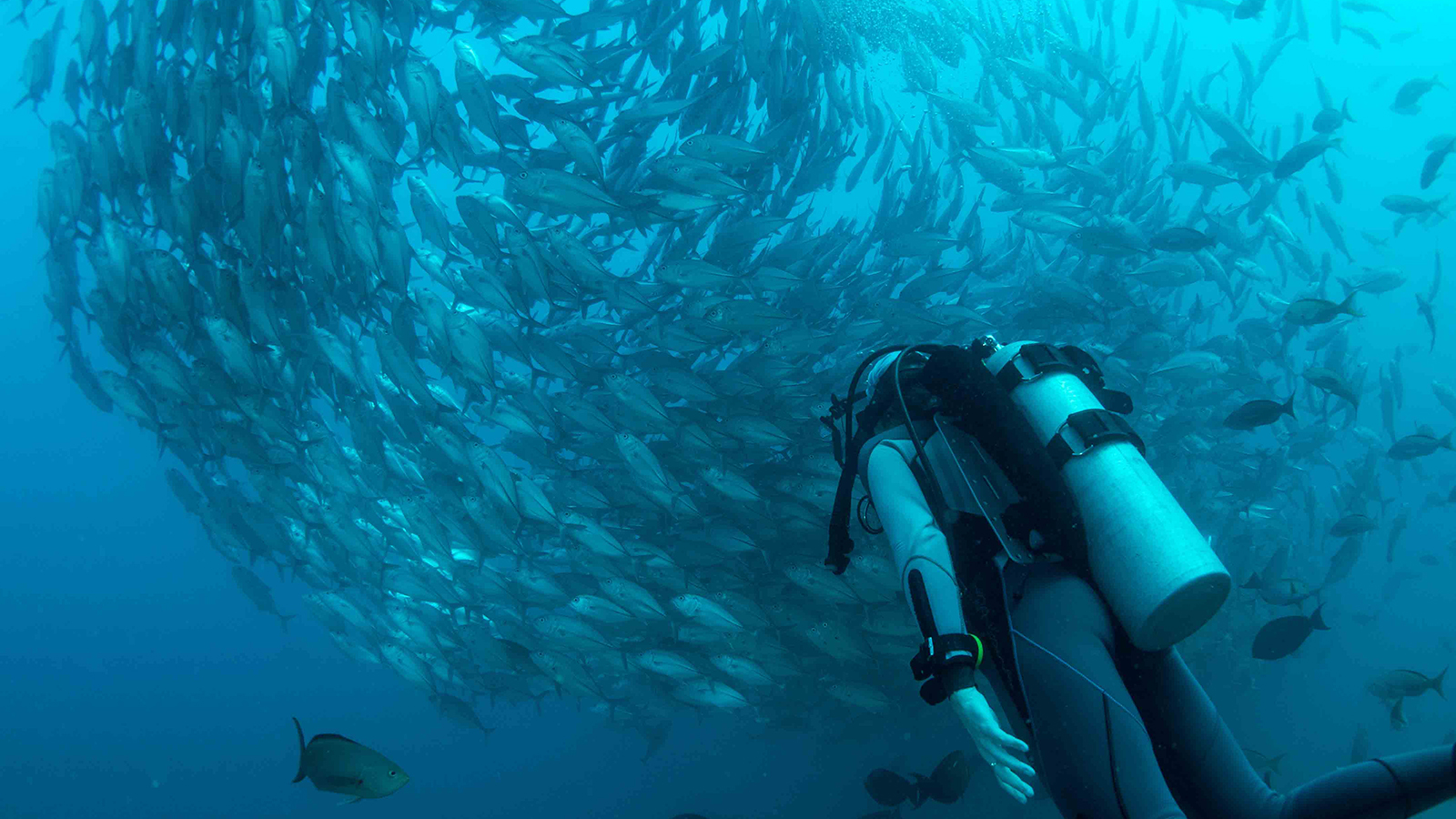
This is a guest blog from James Horrox, which originally ran on www.frontiergroup.org. This is the fourth in a series of blogs about a report, New Life for the Ocean, which we co-authored with Frontier Group.
After decades of abusive overfishing had left the ocean off the Mexican town of Cabo Pulmo devoid of its once rich biodiversity, local activism culminating in the implementation of a no-take marine reserve transformed it into one of the most pristine areas of ocean in Mexico, now recognized by UNESCO as a World Heritage Site.
Cabo Pulmo, on the east coast of Mexico’s Baja California Peninsula, has been called the jewel of the Gulf of California. This unique area of ocean lies in the transition zone between the tropical and temperate Pacific and supports a diverse array of marine life.1 The shallow waters of Bahía de Cabo Pulmo contain the oldest of the three living reefs (and the only hard coral reef) on the west coast of North America.2 Thought to be around 20,000 years old, the reef is home to more than 300 species of fish, around 70 species of invertebrates, and many of the approximately 6,000 other marine species found throughout the Gulf of California.3
Historically home to a vast array of marine species, including huge populations of giant sharks, groupers and other predators, the ocean off Cabo Pulmo has been a source of sustenance for the local community for centuries.4 From the 1970s, the abundance and variety of species in the region made it a famous destination for sport and commercial fishing. By the 1980s, extreme overfishing and weak, poorly enforced regulations had led to a dramatic decline in local fish populations, with populations of top predators, such as sharks and marlin, and large reef species like grouper, radically depleted.5
In the early 1990s, concerned about the effects of human activity on the region’s ocean ecosystem, residents of Cabo Pulmo joined forces with scientists from the local university to lobby the federal authorities to establish protections to safeguard the dwindling natural resources of this overexploited patch of ocean, and to give the reef ecosystem space to recover from decades of abuse.6 In June 1995, the Mexican government established Parque Nacional Cabo Pulmo – Cabo Pulmo National Park – protecting a little over 27 square miles of ocean between Pulmo Point and Los Frailes Cape. Initially, 35 percent of that area was placed off-limits to fishing. Further campaigning by local residents led to the expansion of the no-fishing area over the entire park.7
A 2011 study evaluating changes in marine biomass in the area between 1999 and 2009 revealed that in the space of just 10 years, overall biomass had increased by 463 percent, bringing the reef to a level comparable to that of unfished reefs.8 The biomass of top predators, including sharks and grouper, had increased by 1,070 percent. Fish size and species richness had also increased, as had the diversity of top predators. The combination of higher densities and larger fish created an average biomass more than five times that of unprotected areas in the Gulf of California.9
In the space of just two decades, a heavily degraded patch of ocean had been transformed into a haven of biodiversity. Since the implementation of the protections, populations of numerous species, including whale sharks, manta rays, humpback whales and endangered sea turtles, have rallied.10 A survey conducted in 2018 found 69 reef fish species that were not previously known to live in Cabo Pulmo, corresponding to 24 orders, 35 families and 51 genera, bringing the current checklist to 302 species (comprising 194 genera, 74 families, and 24 orders).11
The reef has also become an important refuge and spawning site for at least one endangered species: the rare gulf grouper.12 Historically, this was the most abundant predatory fish species to inhabit the rocky-reef ecosystems of the Gulf of California.13 In 1960 these fish accounted for around 45 percent of local finfish catches in the region.14 By the 1970s this number had decreased to 10 percent.15 Today, gulf grouper make up less than 1 percent of total catches, and most of that consists of juveniles due to decline in the size of adult populations and fishing of spawning aggregations.16 This precipitous decline has ramifications for the balance of predator and prey species in local reef ecosystems, and has led to the gulf grouper being classed as endangered on the IUCN Red List of Threatened Species and under the U.S. Endangered Species Act.17
Several studies have noted the presence of gulf grouper in the waters of Cabo Pulmo National Park, and there is evidence that the protections are contributing to the return of a growing population.18 The area also provides an ideal setting for scientific study of the behavior of this previously under-researched species. Extensive studies of movement and residency patterns of gulf grouper within the park have revealed that these fish spend a great deal of time at specific sites within the protected area, suggesting that protection of rocky reef habitats like those of Cabo Pulmo can help restore the species to its pre-endangered status.19
Photo: a jackfish tornado at Cabo Pulmo. Credit: Pascal van de Vendel, via Unsplash
- Mitchell H. Dennis, National Marine Fisheries Service – West Coast Division, Status Review of the Gulf Grouper (Mycteroperca jordani), National Oceanic and Atmospheric Administration, June 2015, archived at https://web.archive.org/web/20200710074730/https://www.cio.noaa.gov/services_programs/prplans/pdfs/ID285_Gulf_Grouper_Final_Product.pdf.↩︎
- Global Conservation, Global Conservation Deploys Global Park Defense for MPA Protection in Cabo Pulmo UNESCO World Heritage, 15 June 2018, archived at https://web.archive.org/web/20200710074958/https://globalconservation.org/news/global-conservation-deploys-global-park-defense-mpa-protection-c/.↩︎
- 20,000 years old: AIDA, Protecting the rich marine life of Cabo Pulmo Reef, archived at https://web.archive.org/web/20200710075250/https://aida-americas.org/en/protecting-rich-marine-life-cabo-pulmo-reef. Marine Conservation Institute Atlas of Marine Protection, Cabo Pulmo National Park, accessed 10 June 2020, archived at https://web.archive.org/web/20200710075608/http://www.mpatlas.org/mpa/sites/67704213/. 302 fish species, 70 invertebrates: Jorge Torre Cosio, Executive Director and co-founder of Comunidad y Biodiversidad, personal Communication, 9 November 2020. See also Arturo Ayala Bocos et al., “Updated Checklist of Fishes at Cabo Pulmo Reef, Gulf of California, Mexico,” Revista Ciencias Marinas y Costeras, doi: 10.15359/revmar.10-1.1. May 2018, available at https://www.researchgate.net/publication/324923244_Updated_checklist_of_fishes_at_Cabo_Pulmo_reef_Gulf_of_California_Mexico_Listado_actualizado_de_peces_del_arrecife_de_Cabo_Pulmo_Golfo_de_California_Mexico.↩︎
- Sharks, groupers and other predators: Allison Guy, “Photo Essay: Once Barren, a Protected Reef in Mexico Now Teems with Huge Fish,” Oceana, 25 July 2015, accessed 10 June 2020, archived at https://web.archive.org/web/20200710075901/https://oceana.org/blog/photo-essay-once-barren-protected-reef-mexico-now-teems-huge-fish. Source of sustenance: Amigos para la Conservación de Cabo Pulmo, History, accessed 10 June 2020, archived at https://web.archive.org/web/20200710080314/https://cabopulmoamigos.org/history.html.↩︎
- Sharks disappeared: “Cabo Pulmo Protected Area,” Smithsonian, April 2018, accessed 10 June 2020, archived at https://web.archive.org/web/20200710080500/https://ocean.si.edu/conservation/solutions-success-stories/cabo-pulmo-protected-area. Grouper decline: Gulf of California Marine Program, UC San Diego, Scripps Institution of Oceanography, Cabo Pulmo Science: 20 Years, archived at https://web.archive.org/web/20200710080753/https://scripps.ucsd.edu/centers/cmbc/wp-content/uploads/sites/39/2014/08/20_yrs_Cabo_Pulmo_GCMP_eng.pdf, 7.↩︎
- Amigos para la Conservación de Cabo Pulmo, History, accessed 10 June 2020, archived at https://web.archive.org/web/20200710080314/https://cabopulmoamigos.org/history.html. “Is Mexico’s Cabo Pulmo National Park the Most Successful No-Take Marine Reserve in the World?” MPA News, 15 September 2011, archived at https://web.archive.org/web/20200710080954/https://mpanews.openchannels.org/news/mpa-news/mexicos-cabo-pulmo-national-park-most-successful-no-take-marine-reserve-world.↩︎
- Global Conservation, Global Conservation Deploys Global Park Defense for MPA Protection in Cabo Pulmo UNESCO World Heritage, 15 June 2018, archived at https://web.archive.org/web/20200710074958/https://globalconservation.org/news/global-conservation-deploys-global-park-defense-mpa-protection-c/.↩︎
- Smithsonian, Cabo Pulmo Protected Area, April 2018, accessed 10 June 2020, archived at https://web.archive.org/web/20200710080500/https://ocean.si.edu/conservation/solutions-success-stories/cabo-pulmo-protected-area.↩︎
- Octavio Aburto-Oropeza et al. “Large Recovery of Fish Biomass in a No-Take Marine Reserve,” PLOS ONE 6(8), DOI: https://doi.org/10.1371/journal.pone.0023601, August 2011.↩︎
- “Cabo Pulmo Protected Area,” Smithsonian, April 2018, accessed 10 June 2020, archived at https://web.archive.org/web/20200710080500/https://ocean.si.edu/conservation/solutions-success-stories/cabo-pulmo-protected-area.↩︎
- Arturo Ayala Bocos et al., “Updated Checklist of Fishes at Cabo Pulmo Reef, Gulf of California, Mexico,” Revista Ciencias Marinas y Costeras, doi: 10.15359/revmar.10-1.1. May 2018, available at https://www.researchgate.net/publication/324923244_Updated_checklist_of_fishes_at_Cabo_Pulmo_reef_Gulf_of_California_Mexico_Listado_actualizado_de_peces_del_arrecife_de_Cabo_Pulmo_Golfo_de_California_Mexico 9.↩︎
- Gulf of California Marine Program, UC San Diego, Scripps Institution of Oceanography, Cabo Pulmo Science: 20 Years, archived at https://web.archive.org/web/20200710080753/https://scripps.ucsd.edu/centers/cmbc/wp-content/uploads/sites/39/2014/08/20_yrs_Cabo_Pulmo_GCMP_eng.pdf, 23.↩︎
- Timothy J. Rowell et al., “Seasonal Residency of Gulf Grouper Within Cabo Pulmo National Park,” DataMares, http://dx.doi.org/10.13022/M38C79, 2015, archived at https://web.archive.org/web/20200710174356/http://datamares.ucsd.edu/stories/seasonal-residency-of-gulf-grouper-within-cabo-pulmo-national-park/.↩︎
- Andrea Sáenz-Arroyo et al., “Using Fishers’ Anecdotes, Naturalists’ Observations and Grey Literature to Reassess Marine Species at Risk: The Case of the Gulf Grouper in the Gulf of California, Mexico,” Fish and Fisheries 6(2): 121-133, https://doi.org/10.1111/j.1467-2979.2005.00185.x, June 2005, 126.↩︎
- 10 percent by 1970s: NOAA Fisheries Species Directory, Gulf Grouper, accessed 7 July 2020, archived at https://web.archive.org/web/20200710174934/https://www.fisheries.noaa.gov/species/gulf-grouper.↩︎
- M. Rámirez-Rodriguez, “La Pesca de Escama,” in Estudio del potencial pequero y acuícola de Baja California Sur, I. eds M. Casa-Valdez et al., CICIMAR-CIB, Baja California Sur, La Paz, 1996, 284-308, cited in Timothy J. Rowell et al., “Seasonal Residency of Gulf Grouper Within Cabo Pulmo National Park,” DataMares, http://dx.doi.org/10.13022/M38C79, 2015, archived at https://web.archive.org/web/20200710174356/http://datamares.ucsd.edu/stories/seasonal-residency-of-gulf-grouper-within-cabo-pulmo-national-park/.↩︎
- IUCN Red List: Timothy J. Rowell et al., “Seasonal Residency of Gulf Grouper Within Cabo Pulmo National Park,” DataMares, http://dx.doi.org/10.13022/M38C79, 2015, archived at https://web.archive.org/web/20200710174356/http://datamares.ucsd.edu/stories/seasonal-residency-of-gulf-grouper-within-cabo-pulmo-national-park/. Endangered Species Act: NOAA Fisheries Species Directory, Gulf Grouper, accessed 7 July 2020, archived at https://web.archive.org/web/20200710174934/https://www.fisheries.noaa.gov/species/gulf-grouper.↩︎
- Presence of Grouper: Mitchell H. Dennis, National Marine Fisheries Service – West Coast Division, Status Review of the Gulf Grouper (Mycteroperca jordani), National Oceanic and Atmospheric Administration, June 2015, archived at https://web.archive.org/web/20200710074730/https://www.cio.noaa.gov/services_programs/prplans/pdfs/ID285_Gulf_Grouper_Final_Product.pdf., 72. Return of a growing population: Gulf of California Marine Program, Tracking Patterns of Gulf Grouper (Mycteroperca jordani) Movement and Residency Within Cabo Pulmo National Park, 18 November 2014, accessed 10 June 2020, archived at https://web.archive.org/web/20200710181048/http://gulfprogram.ucsd.edu/blog/coastal-and-marine/tracking-patterns-of-gulf-grouper-mycteroperca-jordani-movement-and-residency-within-cabo-pulmo-national-park/.↩︎
- Studies of movement and residency patterns: Gulf of California Marine Program, Tracking Patterns of Gulf Grouper (Mycteroperca jordani) Movement and Residency Within Cabo Pulmo National Park, 18 November 2014, accessed 10 June 2020, archived at https://web.archive.org/web/20200710181048/http://gulfprogram.ucsd.edu/blog/coastal-and-marine/tracking-patterns-of-gulf-grouper-mycteroperca-jordani-movement-and-residency-within-cabo-pulmo-national-park/. Population restoration: Gulf of California Marine Program, The Return of Gulf Grouper Signifies the Success of Cabo Pulmo to Protect Megafauna, 25 August 2017, accessed 10 June 2020, archived at https://web.archive.org/web/20200710182008/http://gulfprogram.ucsd.edu/general/the-return-of-gulf-grouper-signifies-the-success-of-cabo-pulmo-national-park-to-protect-megafauna/.↩︎
Topics
Authors
Steve Blackledge
Senior Director, Conservation America Campaign, Environment America Research & Policy Center
Started on staff: 1991 B.A., Wartburg College Steve directs Environment America’s efforts to protect our public lands and waters and the species that depend on them. He led our successful campaign to win full and permanent funding for our nation’s best conservation and recreation program, the Land and Water Conservation Fund. He previously oversaw U.S. PIRG’s public health campaigns. Steve lives in Sacramento, California, with his family, where he enjoys biking and exploring Northern California.
Find Out More
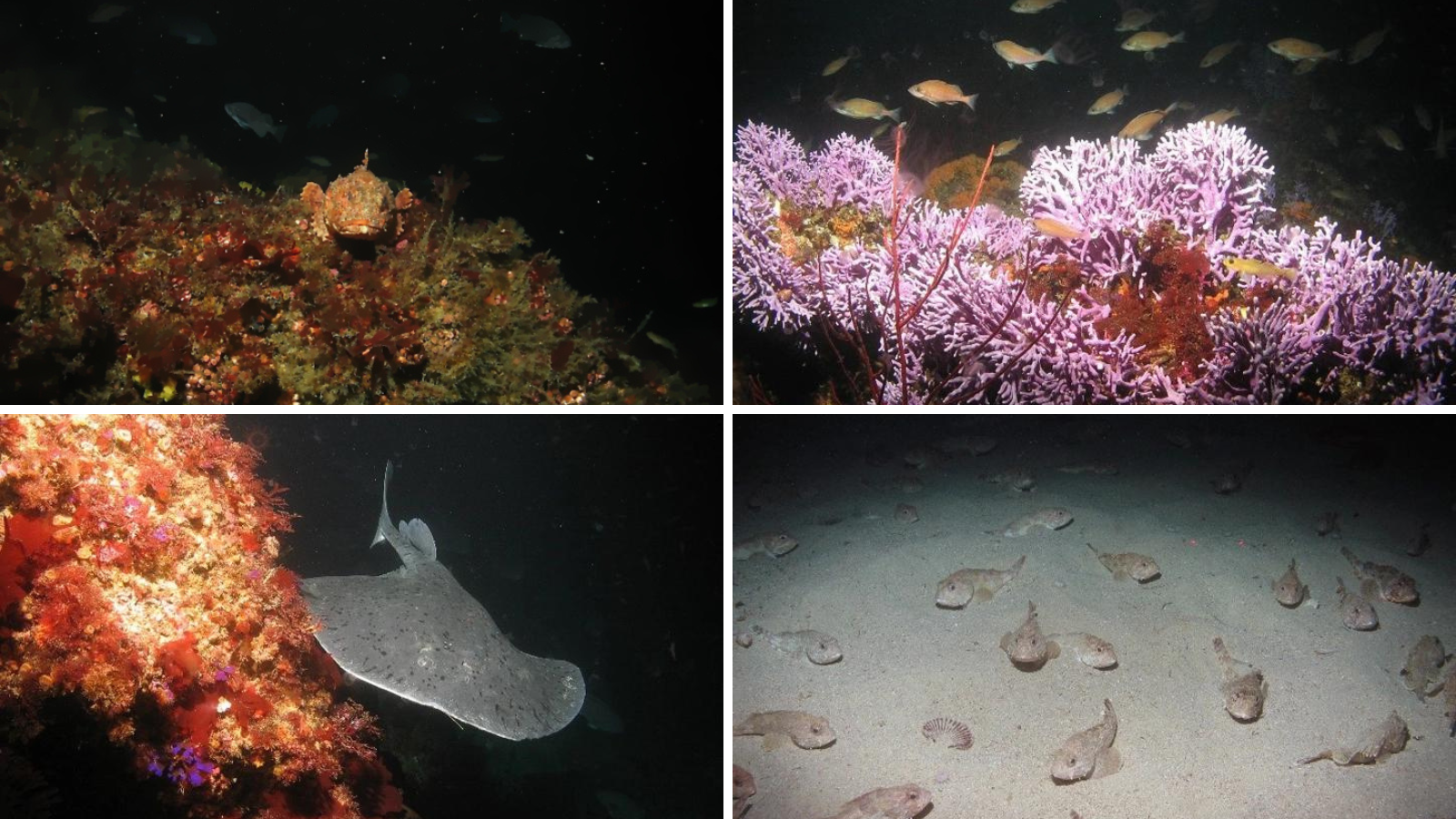
Strengthening protections for our coast’s best places
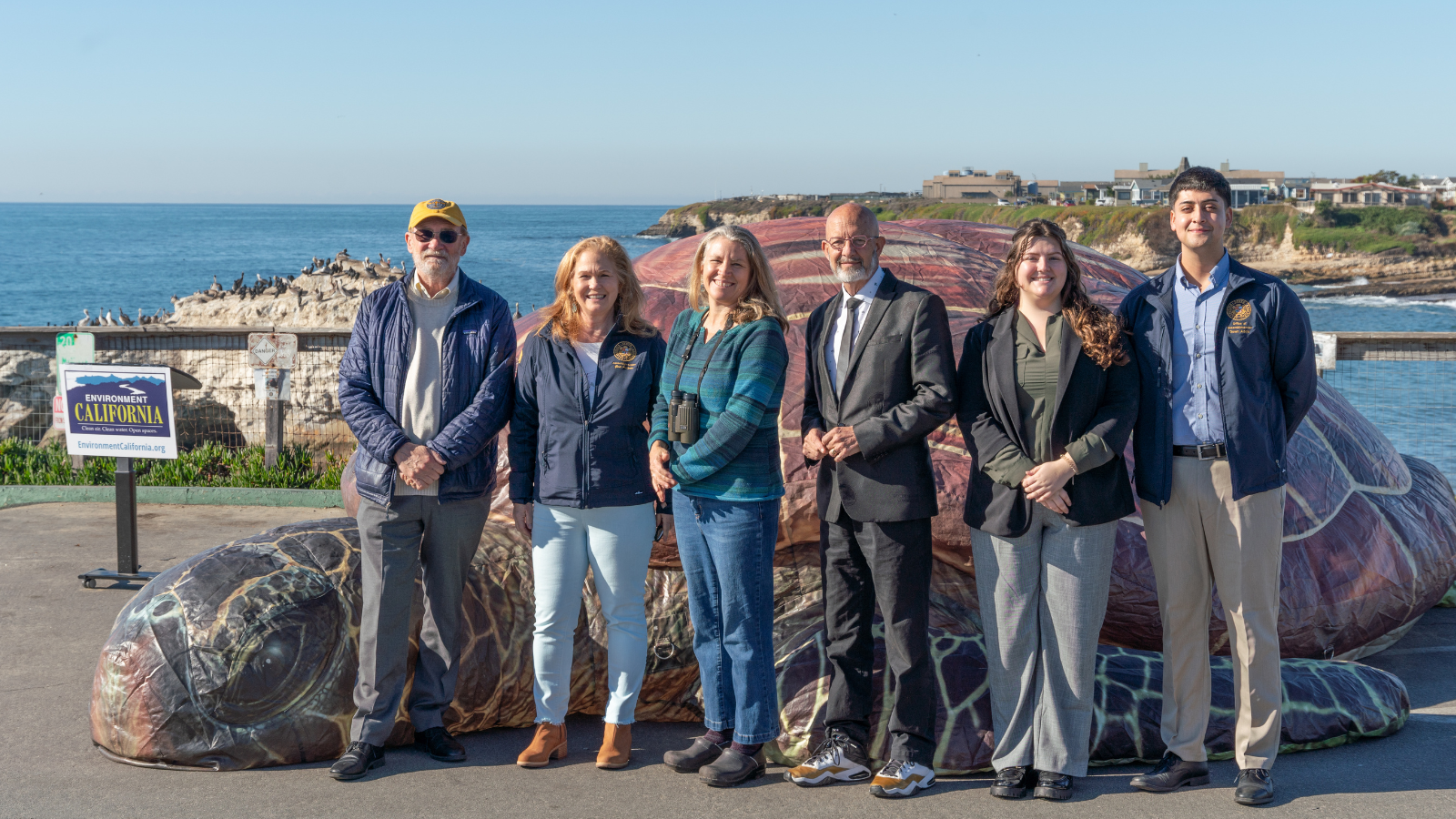
A sea turtle tour to protect California’s coast
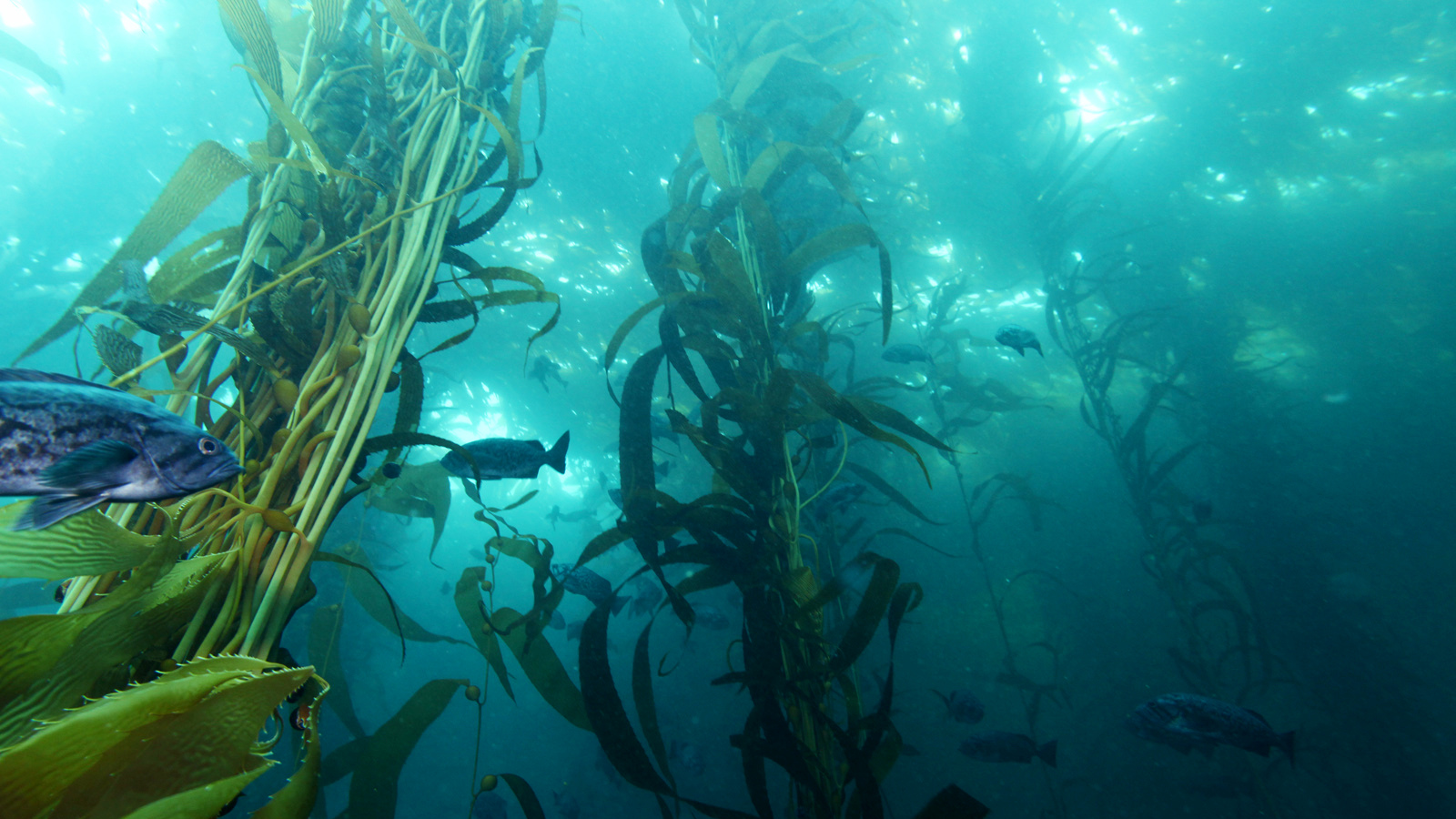
Help California’s kelp forests
